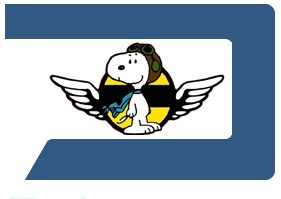

Building the MachNone
A Sky Pup Construction Project
Sky Pup
Here's some information about engine mounts obtained from Ron Schettler at the Rotax forum at Oshkosh '87. Anyone considering designing their own aircraft or making changes to the Sky Pup engine mount should consider the following facts. An engine mount which is too soft or too loose may absorb vibration well but may also absorb power which should be going to the prop. Most of the power produced by the engine is delivered during a very short time in the engine cycle. If the engine is free to move the opposite direction of the prop during that short pulse, a considerable amount of power can be lost. Mr. Schettler cited a specific example where the static thrust of a well-known ultralight was increased from 180 lbs. to 220 lbs. just by moving the engine mounts farther apart. Nothing else was changed. The entire problem is very complicated and includes the "softness", rebound time, spacing of the mounts and engine RPM. It's largely a matter of trial and error to find the best combination. The best approach is to stick with a mount which has been proven to work well. After attending the forum, it was interesting to inspect the engine mounts of the various ultralights at the convention and to note their takeoff and climb performance. The correlation was amazing. Certain ultralights which are known for their sluggish performance have very nice soft mounts which absorb vibration very well. Their owners often end up adding larger engines to get the needed power. It seems that everything in aviation and aircraft design involves a compromise.
In an attempt to reduce vibration on my Rotax powered Pup, I made a small change. In place of the black rubber stoppers, I used white pure gum stoppers which are softer and more resilient. They seem to help and I haven't noticed a reduction in power. So far, I have about 50 hours on the first set. If anyone is interested, I can supply them at the wholesale price of .45 each or $5.00 per dozen.
One final note. I recently mounted a different propeller on my Pup which is much lighter than the original Rotax prop. The Jeco prop from a Rotax 277 powered Eipper GT has a thinner hub and less blade area but the same diameter and pitch. The reduction in the mass of the wood which must be accelerated with each power pulse seems to have tamed the vibration a little more.
Just recently, I was quite relieved to have my first forced landing in my Sky Pup. The Rotax had been running perfectly for almost two years and 80 hours of flying without a single burp. The problem turned out to be worn carburetor float guides which caused them to stick and flood the carburetor and engine. Raw fuel was spraying in my face from the carburetor vent tubes and the engine would not run above 4000 RPM... not quite enough to maintain altitude. A precautionary landing in an open field was the best choice as I was still several miles from the airport, and it was almost dark. Examination of the floats showed that the aluminum inserts in the float guide holes were worn thin. The brass guide pins mounted in the float bowl were also noticeably worn. Though it was not obvious that the floats might stick, they apparently could wobble enough to become jammed. I presume the ultimate cause of the wear is engine vibration. (A complete carburetor float bowl kit is available from Rotax distributors.) Before replacing the parts, I tried to get the problem to repeat itself while on the ground. I was unsuccessful even after propping the tail up to cruise attitude. Hopefully, this experience will help motivate me to always have that emergency landing spot in sight.

Tips on Engine Mounts and Vibration